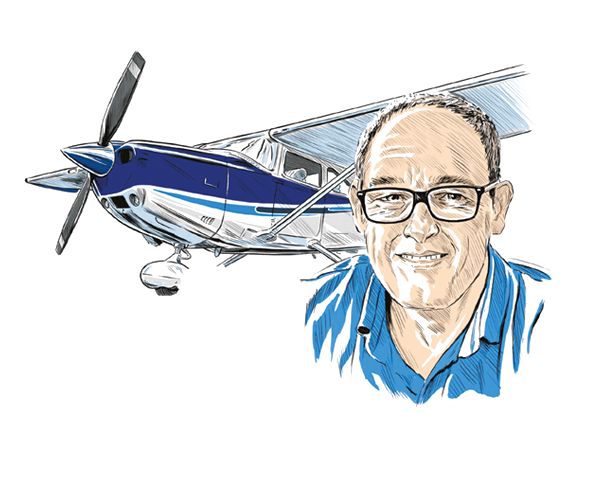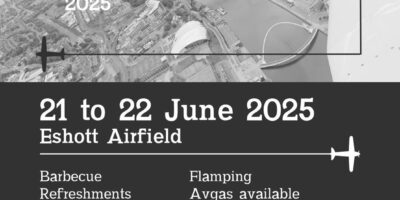The CAA has a serious problem. It’s getting worse, and it urgently needs to be fixed. The dismay and frustration caused by its actions in some areas is quickly growing into a widespread and profound lack of trust between the regulator and regulated, and that will be dreadful for everyone.
This is not just another of those columns having a pop at one of the many easy targets that the CAA is currently presenting. Over the years I’ve both praised and criticised the CAA, and I want to point out there are many great people doing their level best within the organisation. The CAA’s GA Unit under both Tony Rapson and Rachel Gardner-Poole has brought numerous, previously unimaginable, benefits to GA and in many areas the CAA has worked tirelessly, and often at the very edge (and maybe a bit beyond) its remit, to keep pilots flying.
There’s a lot of good stuff being done by a lot of good people, but there’s a lot of bad and mediocre stuff being done too. I believe that much of that is the direct result of having no independent external scrutiny or recourse, and that’s what absolutely has to change.
“The time has come for independent external oversight and scrutiny of the CAA”
If you want examples of the bad and mediocre, how about the CAA’s dangerous view on rule 11? I’ve gone into detail previously, but if you’re unfamiliar, essentially the CAA has ignored what has been very common and pragmatic practice over many years, and is insisting on an interpretation of rule 11 that is both dangerous and inconsistent with the rule itself. It’s trying to dig itself out of this self-made mess by proposing ridiculous solutions that are ineffective and currently invisible, presumably in the hope that we’ll all forget and it’ll blow over.
Then there’s the whole CAP 1404 airspace infringement process (which has been invoked after a few pilots broke rule 11, or other alleged misdemeanours). I’m happy to believe that it was devised with good intentions, but it has become an opaque and secretive process. One that has concentrated huge and significant amounts of power in very few hands, one in which you can be treated as guilty, punished, and then asked to prove your innocence – and one that has caused many individuals huge amounts of stress. It is a process that has fallen into disrepute and which has done nothing to improve the problem of infringements. Sadly, the diseased tentacles of CAP 1404 appear to have spread and contaminated the CAA’s understanding of Just Culture, as I believe is evidenced by their policy on danger area infringements, and probably their view on danger areas as a whole.
How about another example? The CAA recently consulted on the re-classification of controlled airspace. I thought the graphical representation of traffic that supported the document was so poor that I wrote to the CAA’s Richard Moriarty, asking him to withdraw the consultation and try again. You won’t be surprised that he didn’t. The CAA has now published CAP 1934 which details its proposed procedure for reclassifying airspace. Again, perhaps well-intentioned, but basically a three-phase approach that involves them in a lot of considering amongst themselves and consulting with whoever is controlling the bit of airspace. It’s insular in the extreme, and will only serve to raise understandable suspicions regardless of outcome.
Elsewhere in the authority… the ATPL written exam syllabus is changing. Given that it can take up to 18 months to complete the 14 written exams, this poses a challenge for schools. Candidates usually study several subjects, sit those exams and then move on to the next set. It would make a lot of sense to allow people to change syllabus at one of these natural breaks. This is the way that some other authorities are dealing with it, but the UK CAA says NO; meaning that schools will have to teach two sets of students two different syllabi for perhaps the next two years or so. The decision has been taken without consultation, and seemingly to make its internal processes easier. The natural sequitur of starting the new syllabus later than other authorities and not allowing students to transfer mid-series means the UK CAA will fail to achieve full implementation by 31 January 2022, in breach of the EASA requirement (yes, I know that we’re no longer in EASA, but we’ve said we’re remaining aligned, and in the world of commercial pilots that’s going to be essential isn’t it?)
Maybe it’s an evolutionary thing, or maybe after Andrew Haines started to replace gold-plating with proportionality the pendulum is swinging back the other way. I think there are pockets of people who are just used to getting their own way, and of doing it without external scrutiny.
The time has come for independent external oversight and scrutiny of the CAA. The best parts of the organisation will be supported, the not-so-good parts will have to change and improve, the trust and relationship between regulator and regulated will improve and the CAA should become the kind of world-leading organisation that we all want.







